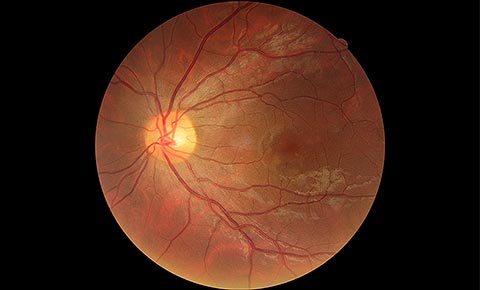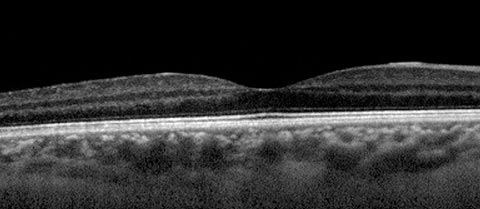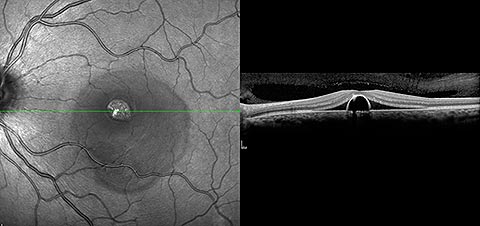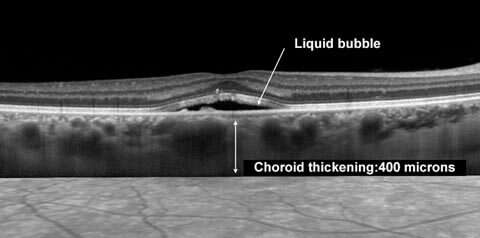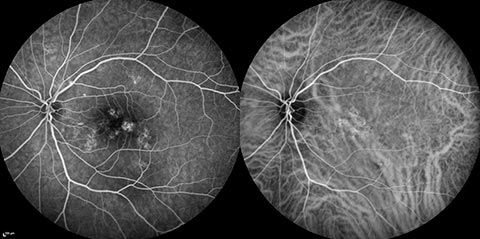Central serious choriorethinopathy (CSC)
Description:
Central serious chorioretinopathy (CSC) is a pathology of the retina and the choroid characterized by the appearance of liquid under the retina. This liquid springs from a ‘leakage point’ located at the level of the retinal pigmentary epithelium.It is the 4th most frequent retinal pathology. It mostly affects men (70% of cases), with an average age of 45. The disease springs from a general state of anxiety and is aggravated or triggered by the use of corticoids. Any general or local corticosteroid therapy should therefore be avoided for such patients at risk.
For women, the disease can be generated by pregnancy.
Symptoms:
In case the macula is affected, patients experience visual impairment as well as the appearance of a rather dark cloud at the centre of their visual field (scotoma), image distortions (metamorphopsia) and modification in size and colour of perceived objects.Diagnosis:
Diagnosis is made by clinical examination; a case would show in the fundus a central fluid bubble typical of the pathology.OCT examination will show the bubble responsible for the serious retinal detachment. Most importantly it will make it possible to track its evolution through time. Finally, it will allow to measure the thickness of the choroid, which is the vascular layer located under the retina. An increased thickness of the choroid is frequently noted as a causing factor of the appearance of CSC.
Fluorescein and/or ICG angiography may be prescribed to confirm the diagnosis in case of a doubt, to eliminate another pathology and/or to guide focal laser treatment when this type of treatment is considered to locate the leakage point.
Evolution:
In most cases, especially in the most frequent case of an acute CSC affecting a young patient, the pathology heals naturally in 1 to 4 months, without requiring any treatment.After this period of time, if there is no amelioration, a treatment can be prescribed. Sometimes a treatment is prescribed earlier if the patient’s visual needs require it (for professional purposes for example).
CSC can recur in the following months or years.
Some forms of CSC recur and evolve through time, affecting both eyes. They therefore turn into a pathology called ‘Diffuse retinal epitheliopathy’ from which full recovery is not guaranteed.
Treatment:
Treatment is considered in the absence of a spontaneous healing after 4 months of evolution.- Photocoagulation of the leakage point or points noticed with the angiography if these points are outside the visual axis
- Visudyne photodynamic therapy
- Medical treatment with Eplerenone or Spironolactone

 Book an appointment
Book an appointment
